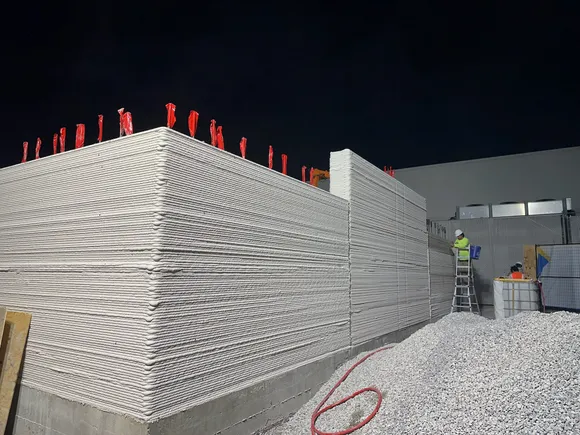Dive Brief:
- Retail giant Walmart is hopping on the 3D-printing train, after partnering with Greeley, Colorado-based Alquist 3D to build an addition on its retail location in Athens, Tennessee.
- Alquist created a nearly 8,000-square-foot, 20-foot-high expansion of the retailer’s online pickup and delivery space at the store, according to a Sept. 10 news release. It marks the first time Walmart has utilized 3D printing technology at this scale, and the addition is one of the largest freestanding 3D-printed commercial concrete structures in the U.S., according to the release.
- Walmart claims its decision to use 3D construction printing in its expansion aligns with its broader goals of becoming more environmentally friendly, leveraging cutting-edge technology to attract customers and accelerating the construction process, according to the release.
Dive Insight:
Walmart picked Alquist due to its experience with 3D materials and robotics and a desire to take on a project of this scale, said Mike Neill, vice president of new construction for Walmart, in the release.
“Walmart is always looking to innovate and leverage developing technologies, and we looked at several new building methods and companies for this project,” Neill said.
Commercial properties that leverage 3D printing are few and far between. Patti Harburg-Petrich, principal in the Los Angeles office of U.K.-based engineering firm Buro Happold, told Construction Dive last year that building codes were hampering progress on the technique.
Nevertheless, some builders in the space are betting on the tech. Last September, Canadian builder WSP announced that it was researching new applications for 3D printed concrete, including infrastructure and clean energy projects.
“The technology is impacting the housing sector and its reach is expected to eventually expand into heavy infrastructure,” said Markus Wernli, vice president of the maritime division at WSP in the U.S., in a news release announcing the move. “The use of 3DPC will first grow in less challenged structural and non-structural components before finding application in components for large infrastructure.”
Outside of terrestrial construction, 3D printing is finding a use as well — a team from New York City-based Turner is working with AI SpaceFactory to test the capabilities of off-world 3D printing here on Earth.
